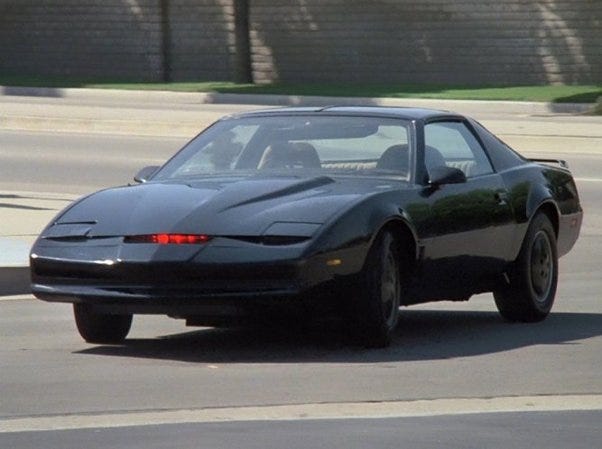This sleek black Pontiac Trans Am, emblazoned with a red Knight Rider logo, isn't just a cool car. It's a symbol of what artificial intelligence could look like: a sentient partner, a cunning crime fighter, and a technological marvel beyond imagination. KITT, the artificial intelligence of Knight Industries Two Thousand, captured the minds of audiences in the 1980s and continues to inspire today. But was KITT just a pipe dream, or could the future really hold such advanced AI companions?
KITT's abilities were truly fantastic for its time. Voice recognition, autonomous driving, advanced crime-fighting technology – these features seem commonplace today, but in the 1980s, they were the stuff of science fiction. Now, we have real-world AI assistants like Siri and Alexa, self-driving vehicles on the verge of widespread adoption, and crime-fighting technologies like facial recognition. The line between fantasy and reality is blurred.
But KITT offered more than just impressive technology. He had character, a sense of humor, and a moral compass. She learned and grew alongside Michael Knight, forming a deep bond that went beyond the typical human-machine relationship. Perhaps this is where the true potential of AI lies. Machines that can not only perform tasks, but can also understand, interact with, and even learn from humans.
Looking to the future, artificial intelligence has limitless possibilities:
Personalized healthcare: Imagine AI-powered assistants monitoring your health, diagnosing diseases, and even suggesting preventive measures. KITT's advanced sensors and diagnostics are no longer a far-fetched idea.
AI tutors can adapt to individual learning styles, provide personalized instruction and bridge the gap between students and teachers. KITT's ability to access and process information can be an invaluable tool in the classroom.
AI can analyze data and develop strategies to address climate change, manage resources, and create a greener future. KITT's efficiency and adaptability can inspire sustainable technology solutions.
AI can enhance human creativity, generate new ideas, and even co-create works of art and music. Imagine KITT composing a catchy tune alongside Michael Knight.
However, we must remember that with great power comes great responsibility. The ethical implications of artificial intelligence must be carefully considered. Issues such as data privacy, algorithmic bias, and potential job displacement must be addressed. KITT's strict ethical code and Michael Knight's ethical guidelines are valuable reminders of the human oversight necessary to develop responsible AI.
Perhaps the true legacy of Knight Industries 2000 AI is not just the technology itself, but the vision it embodies: a future where humans and machines collaborate, where advanced technology is used for good, and where AI enhances our lives rather than replaces them. KITT has shown us a glimpse of what is possible, and it is our responsibility to ensure that AI achieves its potential to create a better future for all.
So, let the red scanner pulse again, and let Kate's voice echo in our imaginations. Let's use Knight Rider's inspiration to guide us toward a future where AI is not just a fantastical marvel, but a trusted partner, a force for good, and a testament to the limitless potential of human ingenuity.

